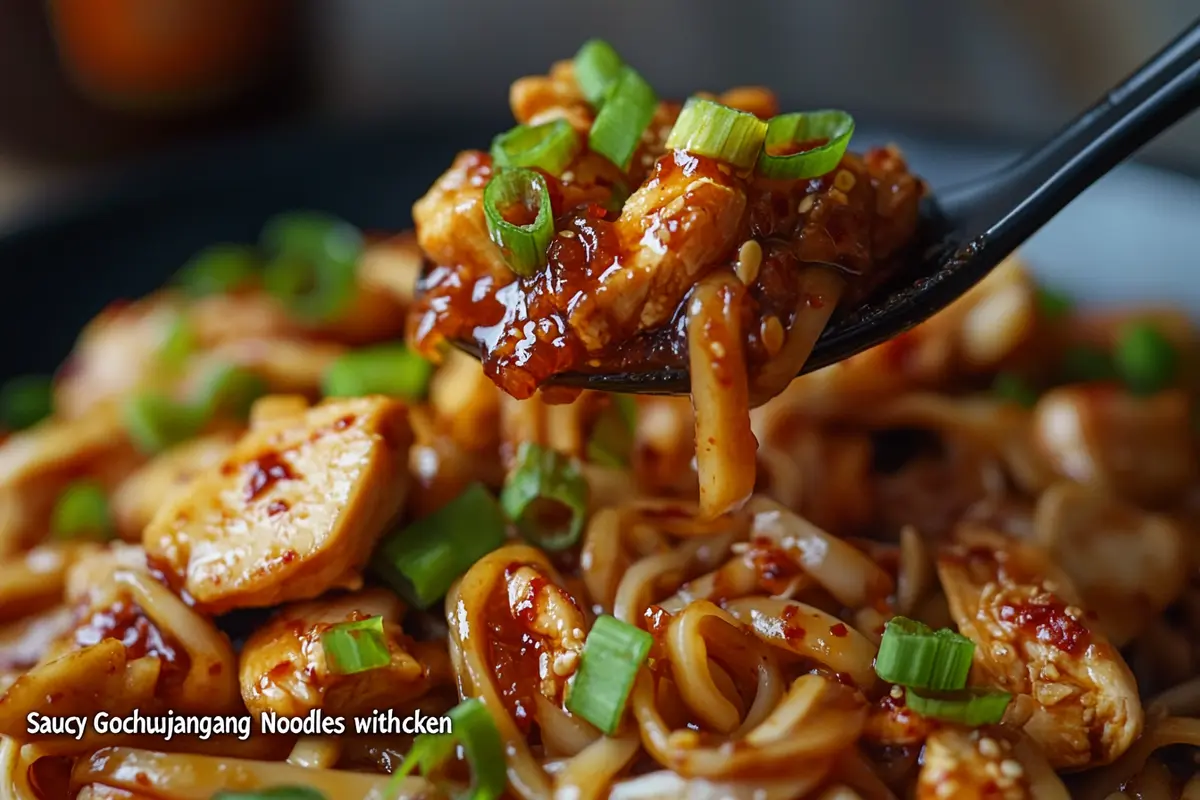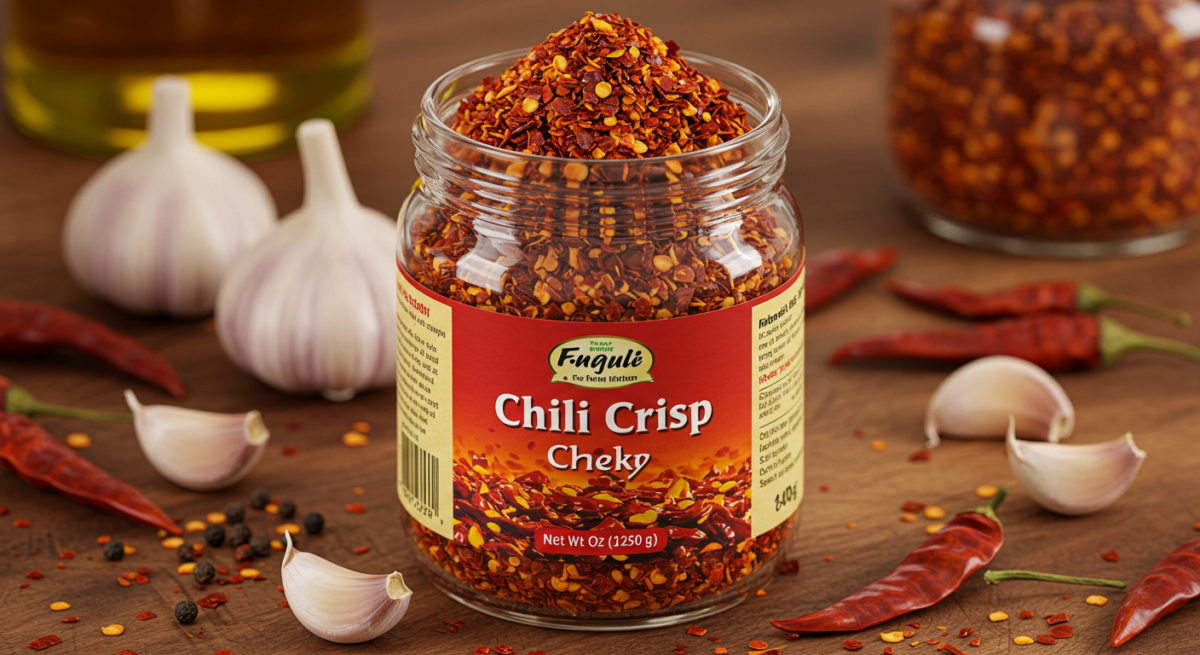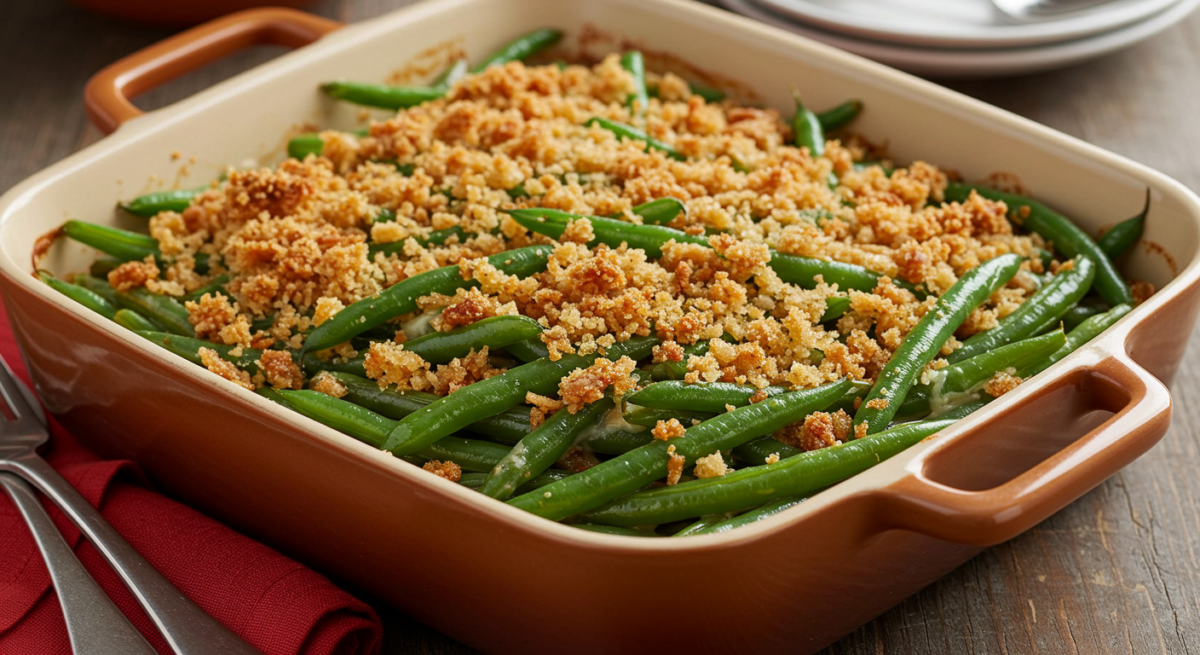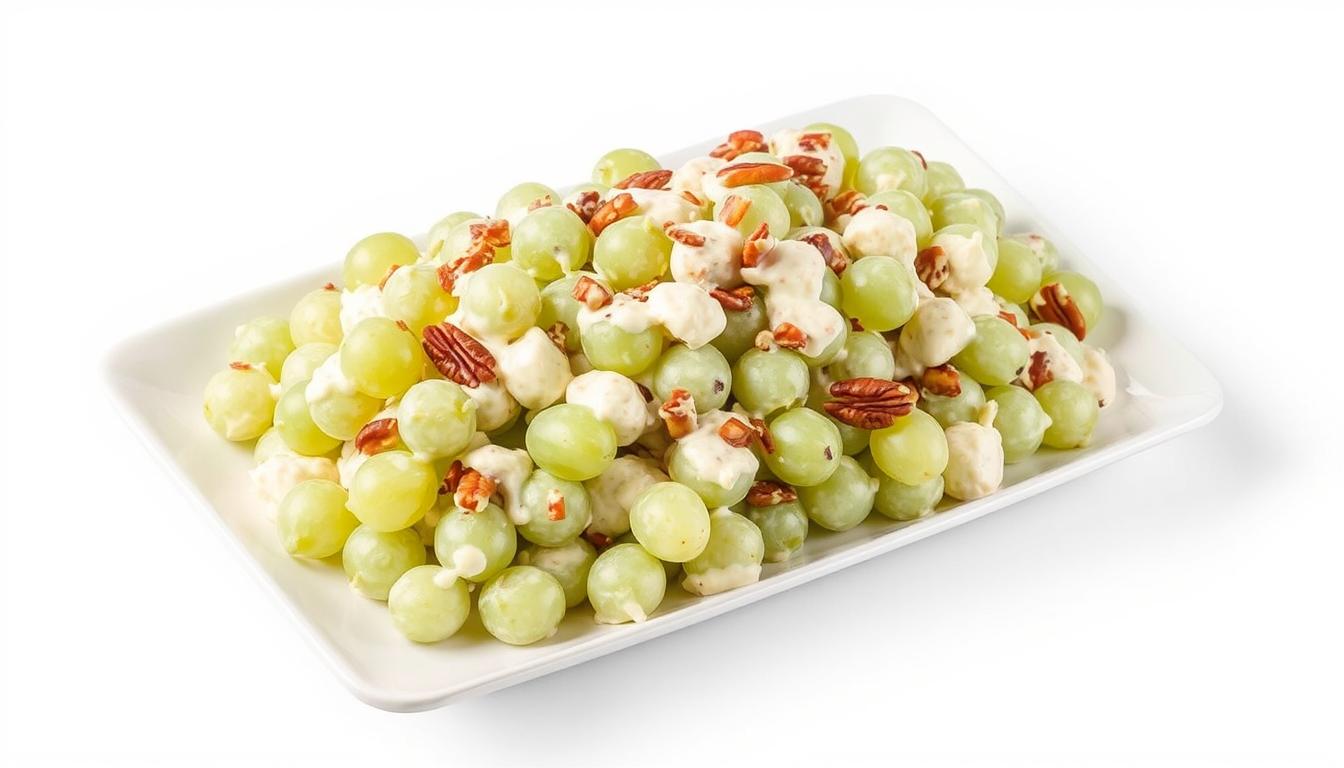Saucy Gochujang Noodles with Chicken
Are you ready to add a burst of savory, spicy, and sweet flavors to your dinner rotation? Let’s talk about Saucy Gochujang Noodles with Chicken—a mouthwatering dish that perfectly balances heat, tang, and the comforting chew of noodles. This recipe harnesses the power of gochujang, a vibrant and bold Korean chili paste that has taken the culinary world by storm. In this article, we’ll explore everything you need to know about creating this delightful meal at home, from essential ingredients to cooking tips, possible variations, and more. By the time you’re done reading, you’ll feel like you’ve spent an afternoon chatting with a friend who’s shared their secret family recipe. Thus, let’s jump right in and uncover the magic of Saucy Gochujang Noodles with Chicken.
1. What Exactly Is Gochujang?
Before we dive into the specifics of cooking Saucy Gochujang Noodles with Chicken, it’s helpful to understand the star of the show: gochujang. This thick, dark red paste is a cornerstone of Korean cuisine, known for its spicy depth and subtle sweetness. It’s made primarily from fermented soybeans, chili peppers, and glutinous rice. Consequently, the fermentation process contributes to its unique, rich flavor profile.
Why is gochujang so popular these days?
- Bold Flavors: It delivers a layered spiciness that’s not just about heat—it’s about complexity.
- Fermented Goodness: Fermentation infuses gochujang with an unmistakable umami quality.
- Versatility: You can use it in sauces, marinades, dips, and beyond.
Indeed, think of gochujang like a flavor bomb you can add to practically anything. And while it’s become quite trendy in global cooking, it’s actually been a staple in Korean households for centuries. By adding it to your noodles, you instantly impart depth and spice, turning a simple stir-fry into an unforgettable meal.
2. Why Everyone Loves Saucy Gochujang Noodles with Chicken
People crave Saucy Gochujang Noodles with Chicken for a variety of reasons. Let’s break down some of the top appeals of this dish, and then explore each aspect in more detail.
2.1 Balanced Flavor Profile
Gochujang’s spiciness mixes with sweet ingredients (like sugar or honey), savory notes from soy sauce, and the mild richness of chicken. All these elements come together to form a sauce that’s spicy yet comfortingly sweet and tangy. Moreover, the result is a perfectly rounded flavor that keeps you coming back for more.
2.2 Comfort Food Feel
Noodles have a way of making any meal feel cozy. Mix them with a thick, luxurious sauce, and you instantly have a comfort-food classic—only with a Korean twist. Consequently, it’s the type of dish you crave on a chilly evening or after a long day at work.
2.3 Ease of Preparation
Despite how impressive it looks and tastes, Saucy Gochujang Noodles with Chicken is not overly complicated to make. You can marinate the chicken, cook the noodles, stir-fry everything together, and voilà—you have a delicious meal in relatively little time. Furthermore, the steps are straightforward even for beginner cooks.
2.4 Customizable Spice Level
Not everyone can handle super-spicy foods, and that’s perfectly fine. You can tailor the amount of gochujang to your own heat tolerance. Prefer a milder dish? Go easy on the paste. Conversely, if you want more kick, add an extra tablespoon or two. Equally, you can use more sweetener to balance out any excess heat.
2.5 Great for Leftovers
The sauce thickens and deepens in flavor after sitting in the fridge. This means your leftovers taste even better the next day. Pack a container for lunch, reheat it, and enjoy a meal that’s just as mouthwatering as when it was first prepared. Consequently, you waste nothing and relish everything.
No matter whether you’re a seasoned cook or new to the kitchen, Saucy Gochujang Noodles with Chicken is a crowd-pleaser that invites you to explore the rich world of Korean-inspired cooking. Additionally, it ensures you don’t spend hours hovering over a stove.
3. Essential Ingredients You Need
When it comes to Saucy Gochujang Noodles with Chicken, the quality of ingredients can significantly impact the final flavor. Below is a concise rundown of what you’ll need to stock up on:
- Chicken
- Best cuts: Chicken thighs or breasts (boneless)
- Why they work: Thighs offer a juicy texture, whereas breasts are leaner and cook faster.
- Noodles
- Types to consider: Udon noodles, soba noodles, wheat noodles (like ramen or lo mein), or even spaghetti
- Tip: Cook them according to package instructions and drain well before mixing with your sauce.
- Gochujang
- Must-have: This is the backbone of the dish, contributing the bold, spicy flavors that define Korean cuisine.
- Soy Sauce
- Go low-sodium: This helps you control the saltiness of your dish.
- Adds savory depth: Complements the sweetness in the sauce and the spice of the gochujang.
- Sweeteners
- Options: Brown sugar, honey, or maple syrup
- Purpose: Balances the heat and tanginess of the gochujang.
- Aromatic Add-Ons
- Garlic and ginger: Freshly minced garlic and grated ginger add brightness and a zesty layer.
- Onions, bell peppers, or carrots (optional): Veggies provide extra nutrition and a satisfying crunch.
- Oil
- Neutral choices: Vegetable or canola oil
- If you want a nuttier flavor: A splash of sesame oil near the end can add a pleasant aroma.
- Garnishes
- Green onions: For a pop of color and fresh bite.
- Sesame seeds: Adds a toasty, nutty flavor.
- Fresh cilantro or basil (optional): Offers a layer of herby brightness.
Indeed, in most cases, these ingredients are accessible at local supermarkets. Should you struggle to find gochujang, check an Asian grocery store or order it online. Ultimately, once you have it, you’ll wonder how you ever cooked without it.
4. Prepping the Chicken: A Flavorful Marinade
One major factor that sets Saucy Gochujang Noodles with Chicken apart from an ordinary stir-fry is the marinade. While you could simply coat your chicken in sauce as you cook, marinating it beforehand infuses every bite with deeper flavor. A good marinade typically includes:
- 2 tablespoons of gochujang
- 1 tablespoon of soy sauce
- 1 tablespoon of sweetener (honey or brown sugar)
- 1 clove of minced garlic
- ½ teaspoon of grated ginger
- 1 tablespoon of oil (sesame or neutral)
How to marinate:
- Cut your chicken into bite-sized pieces.
- Combine all marinade ingredients in a bowl.
- Toss the chicken to coat every piece thoroughly.
- Cover and refrigerate for at least 20 minutes, or up to overnight for maximum flavor.
Moreover, marinating beforehand means your chicken absorbs tangy, sweet, and spicy flavors as it rests, ensuring you get tasty morsels once they hit the heat. Plus, it helps your chicken remain tender and juicy when you stir-fry it later.
5. Step-by-Step Cooking Instructions
You’ve got your ingredients lined up, your chicken marinated, and your noodles ready for a bath in boiling water. Now it’s showtime. Here’s a straightforward guide to making Saucy Gochujang Noodles with Chicken at home. However, feel free to adjust each step to suit your own style.
5.1 Cook the Noodles
- Bring a large pot of water to a rolling boil.
- Add your choice of noodles and cook them according to the package directions, which typically range between 3 to 10 minutes.
- Drain the noodles and rinse them briefly under cold water. This helps prevent them from clumping or overcooking.
- Toss them lightly in a bit of oil and set aside.
5.2 Sear the Marinated Chicken
- Heat a tablespoon of oil in a wok or large skillet over medium-high heat.
- Take your chicken out of the fridge and let it come to room temperature for a few minutes, thereby preventing uneven cooking.
- Place the chicken pieces into the hot pan and spread them out so they’re not overlapping.
- Sear each side for about 2 to 3 minutes, or until the chicken gets lightly browned.
- Ensure the inside is cooked through. Use a meat thermometer if needed (the internal temperature should read 165°F or 74°C).
5.3 Add Vegetables (Optional)
- If you like veggies in your noodles, now’s the time to add them.
- Toss in sliced onions, bell peppers, carrots, or any other quick-cooking vegetable.
- Sauté until they’re slightly tender but still have a bit of crunch, usually about 3 to 5 minutes.
5.4 Create the Sauce
- Mix together in a small bowl:
- 2 more tablespoons of gochujang
- 1 or 2 tablespoons of soy sauce (adjust to taste)
- 1 tablespoon of sweetener (brown sugar or honey)
- 1 clove of minced garlic (optional if you want extra punch)
- ½ teaspoon of grated ginger (optional but adds zing)
- Stir until everything is well combined. The mixture should be thick yet still pourable.
5.5 Combine and Simmer
- Reduce the heat to medium-low.
- Gently add the drained noodles to the pan, along with the cooked chicken.
- Pour in the sauce, mixing carefully so every noodle strand and chicken piece is coated.
- Allow it to simmer for a couple of minutes. The sauce will cling to the noodles and thicken slightly.
5.6 Add Finishing Touches
- Taste-test and adjust if needed—add a pinch more sugar for sweetness, a dash of soy sauce for saltiness, or an extra spoon of gochujang for heat.
- Toss in some fresh green onions or sesame seeds right before serving for an extra flavor boost.
5.7 Plate and Enjoy
- Transfer your Saucy Gochujang Noodles with Chicken to a serving platter or individual bowls.
- Garnish with additional sesame seeds or chopped herbs.
- Indeed, it’s time to dig in.
It might sound like many steps, but the process flows quickly once you get started. Moreover, before you know it, you’ll have a steaming plate of spicy, saucy noodles, ready to wow your taste buds and anyone lucky enough to share your table.
6. Tips for Guaranteed Success
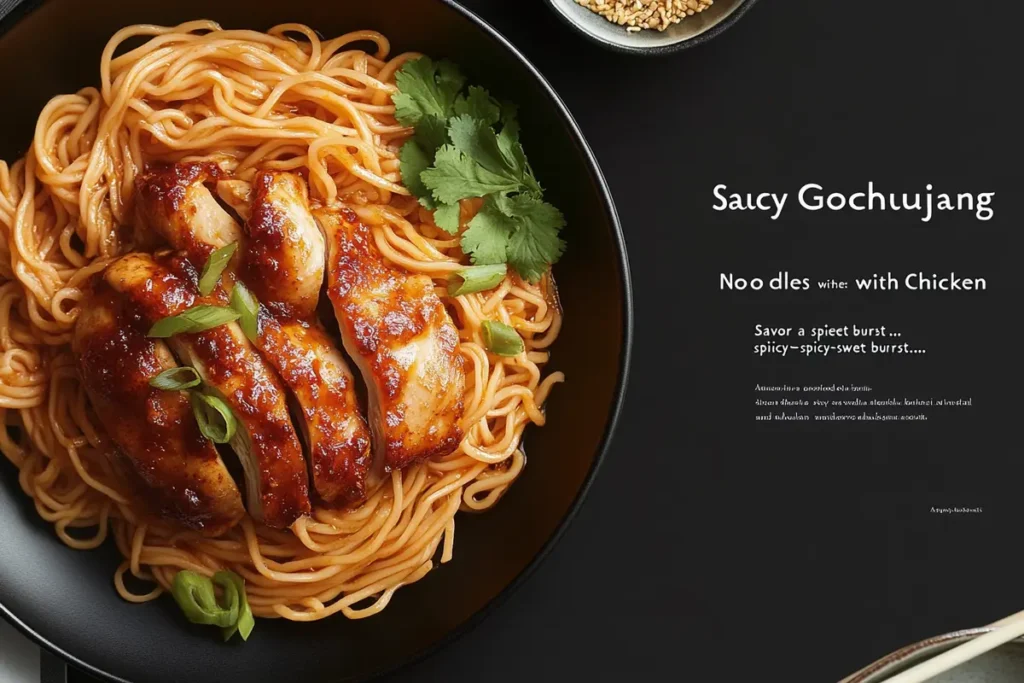
Even a straightforward recipe can be improved with a few smart cooking tips. If you want your Saucy Gochujang Noodles with Chicken to stand out from all the rest, keep the following in mind. Furthermore, don’t hesitate to experiment until you find your perfect balance:
- Start Hot:
Make sure your pan is well-heated before adding the chicken. A sizzling start locks in juices and helps develop a flavorful crust. - Cook in Batches:
If you have a smaller skillet, avoid overcrowding. Indeed, sear the chicken in batches so it browns instead of steams. - Don’t Overcook the Noodles:
Follow the package instructions, but always aim for al dente. Once you add them to the sauce and continue cooking, they’ll soften a little more. - Taste as You Go:
Everyone’s palate is different. Additionally, sampling the sauce and chicken during the cooking process can prevent over-salting or under-seasoning. - Beware of Burn:
Gochujang has sugars that can caramelize or burn if the heat is too high for too long. Hence, keep an eye on the pan, and lower the heat if you see signs of scorching. - Rest After Marinating:
Allow the chicken some time in the marinade so the flavors can fully develop. Even 20 minutes makes a noticeable difference. - Play With Consistency:
If you want a thicker sauce, let it simmer a bit longer. Conversely, if it’s too thick, add a splash of water or chicken broth to thin it out.
By following these small but crucial tips, you’ll build a foundation that guarantees your dish turns out consistently delicious every single time.
7. Possible Variations to Try
Saucy Gochujang Noodles with Chicken is fantastic as-is, but don’t be afraid to branch out. Below are some tasty variations you can try if you’re feeling experimental. Furthermore, these options allow you to tailor the dish to your preferences:
7.1 Spice It Up Even More
If you consider yourself a spice warrior, add a sprinkle of chili flakes or a squirt of sriracha to the sauce. This amps up the heat factor. Additionally, you could slice fresh hot peppers (such as jalapeños or Thai chilis) and stir them in for an extra punch.
7.2 Use a Different Protein
- Pork: Pork shoulder slices or thin pork belly strips absorb the gochujang sauce wonderfully.
- Beef: Lean beef strips are a great choice if you want a more robust flavor.
- Seafood: Shrimp or squid pairs surprisingly well with the bold sauce.
- Vegetarian Friendly: Swap chicken for tofu, tempeh, or a blend of stir-fried vegetables.
7.3 Get Creative With Noodles
- Rice noodles: Provide a lighter, gluten-free version of the dish.
- Soba noodles: Offer a buckwheat flavor that adds a nutty depth.
- Spaghetti: Don’t laugh—plenty of people use spaghetti as a stand-in when they can’t find Asian noodles, and it can still taste amazing.
7.4 Creamy Twist
Stir in a bit of coconut milk or heavy cream right before serving. Consequently, this transforms the sauce into a luxurious, velvety concoction with a milder heat level.
7.5 Vegetable Additions
- Leafy Greens: Throw in a handful of spinach, baby bok choy, or kale near the end of cooking.
- Mushrooms: Shiitake or portobello can bring an earthy tone to the dish.
7.6 Fried Egg Topping
Crown your bowl of noodles with a fried egg, sunny-side-up or over-easy. Therefore, the runny yolk oozes into the gochujang sauce, making every bite extra decadent.
With these variations, you’re free to tailor the recipe to your cravings, dietary preferences, and available ingredients. Moreover, cooking is all about creativity, so never hesitate to put your own spin on a tried-and-true recipe.
8. Serving Suggestions and Side Dishes
Saucy Gochujang Noodles with Chicken can be a satisfying meal on its own, but sometimes you want a well-rounded spread. Here are a few side dishes and serving ideas to complete your feast. Likewise, mixing and matching helps create a fuller dining experience:
- Kimchi:
- This iconic Korean side dish features fermented cabbage or radishes with a spicy, tangy bite. It pairs beautifully with anything that has gochujang in it.
- Simple Cucumber Salad:
- Marinate sliced cucumbers in a mix of vinegar, sugar, and salt. This refreshingly cool salad helps balance the heat of the noodles.
- Miso Soup or Light Broth:
- A warm bowl of miso soup or vegetable broth is a gentle counterpart to the robust flavors in the noodles.
- Steamed or Stir-Fried Vegetables:
- Broccoli, bok choy, or mixed veggies add extra nutrients and texture variety.
- Fried Dumplings or Gyoza:
- Serve a small plate of dumplings on the side for a restaurant-style appetizer.
- Pickled Radish (Danmuji):
- Bright yellow and tangy, this Korean pickled radish contrasts nicely against the spicy noodles.
When arranging your meal, you can opt for a banchan-style setup (like in Korean cuisine), where multiple small dishes accompany the main course. Consequently, it allows everyone to mix and match flavors according to preference.
9. Storing and Reheating Leftovers
Sometimes, you end up with more Saucy Gochujang Noodles with Chicken than you can finish in one sitting. Therefore, it’s important to know how to store and reheat everything properly. Follow these guidelines to keep it as tasty as possible:
- Refrigeration:
- Allow the noodles to cool slightly.
- Transfer them to an airtight container and store in the fridge for up to 3 days.
- Reheating Methods:
- Microwave: Place your noodles in a microwave-safe bowl, add a splash of water to help loosen the sauce, and heat in short intervals, stirring in between.
- Stovetop: Warm a skillet over medium-low heat, add your leftover noodles, and stir until heated through. If the sauce seems too thick, mix in a little water or chicken broth.
- Freezing:
- If you suspect you won’t eat your leftovers soon, you can freeze them. However, the texture of the noodles might change slightly once thawed.
- It’s usually best to freeze just the sauce and cooked chicken, then boil fresh noodles when you’re ready to eat.
- Freshening Up the Flavors:
- Sometimes, reheated dishes lose a bit of their zing. Thus, add a dash of soy sauce, a hint of gochujang, or a squeeze of lime right after reheating to revive that bold taste.
These simple tips will help maintain the mouthwatering character of your meal. Moreover, you can treat yourself to a second round of the same deliciousness without any hassle.
10. Frequently Asked Questions
Q: Can I make Saucy Gochujang Noodles with Chicken gluten-free?
A: Absolutely. Ensure you choose gluten-free soy sauce (tamari is a common alternative) and gluten-free noodles like rice noodles or certified gluten-free soba noodles. Also, always check the label on your gochujang because some brands may include wheat.
Q: What if I don’t have any gochujang on hand?
A: Gochujang is pretty essential for that signature Korean flavor. Nevertheless, in a pinch, you could use a blend of chili garlic sauce, miso paste, and a bit of sugar. Keep in mind that this will not exactly replicate the complex profile of gochujang, but it’s a decent workaround.
Q: Is it possible to reduce the heat level significantly?
A: Yes. Gochujang can be potent. Start with just a tablespoon, and add a bit more sweetener or coconut milk to mellow the spice. You can always add extra chili sauce at the end if you decide you want more heat.
Q: Can I prepare the sauce in advance?
A: Definitely. You can make a big batch of sauce and store it in a sealed container in the fridge for up to a week. It’s a convenient approach if you plan on cooking multiple gochujang-based dishes.
Q: Which type of noodle works best?
A: There is no hard-and-fast rule here—it’s all about personal preference. Udon noodles are thick and chewy, while rice noodles are lighter. Lo mein or ramen noodles also work well. Pick what makes you happiest.
Q: How do I avoid over-salting the dish?
A: Use low-sodium soy sauce, and always taste the sauce before fully committing. Gochujang contains salt, so be mindful of any additional seasoning.
Q: Does this recipe only work with chicken?
A: Definitely not. Try it with tofu, shrimp, or thinly sliced beef for a new twist. The sauce is versatile enough to complement a variety of proteins.
11. Adding a Unique Spin: Stir-Fry vs. One-Pot Method

Typically, this recipe is done in a stir-fry style—cook the chicken first, toss in vegetables, and then add noodles. But if you’re in the mood for simpler cleanup, consider a one-pot method. Consequently, it saves you time without sacrificing flavor:
- Sauté Chicken and Aromatics:
In a large, deep skillet or pot, cook your marinated chicken until browned. Then, remove it from the pot. - Simmer Noodles in Broth:
Add a small amount of broth (chicken or vegetable) to the same pot along with gochujang, soy sauce, and any sweeteners. Put your noodles directly into this liquid. Let them cook and absorb flavor simultaneously. - Return Chicken and Combine:
Once the noodles are almost done, return your chicken to the pot, stirring gently. Indeed, let the sauce thicken as you reduce the heat. - Serve:
Garnish with green onions or sesame seeds, and enjoy with fewer dishes to wash afterward.
This alternative approach can be especially convenient when you’re pressed for time or just don’t feel like juggling multiple pans. Ultimately, the flavors will be slightly different since the noodles are cooked directly in the sauce, but it’s equally delicious in its own way.
12. Cultural Appreciation and Serving Traditions
While Saucy Gochujang Noodles with Chicken is not strictly a traditional Korean dish, it draws on authentic Korean ingredients and cooking methods. Whenever you experiment with global flavors, take a moment to appreciate the culinary heritage behind them. Indeed, gochujang is an ancient ingredient that has evolved over centuries, deeply ingrained in Korean food culture.
- Kimchi Making (Kimjang): Historically, Korean families have pickled and fermented vegetables, passing recipes down through generations.
- Fermentation Process: Gochujang is just one of many staples—like doenjang (fermented soybean paste) and ganjang (soy sauce)—that highlight the importance of slow, careful fermentation in Korean cuisine.
- Sharing Meals: In many Korean households, dishes are served family-style. Everyone gathers around the table, using chopsticks to pick up bites from shared plates.
Understanding and respecting these backgrounds can only enhance your culinary journey. You’re not just cooking dinner—you’re sampling a piece of a culture that holds food in high regard as both nourishment and communal connection.
13. A Look at the Nutrition
It’s always nice to know what you’re putting into your body. Although exact values vary depending on the ingredients you choose, Saucy Gochujang Noodles with Chicken generally offers a balance of macronutrients:
- Protein:
Chicken is a great source of lean protein. If you opt for thigh meat, you’ll consume a bit more fat than breast meat, but you’ll also gain a richer flavor. - Carbohydrates:
Noodles, whether wheat or rice-based, provide carbohydrates. These carbs give you energy to power through your day. - Fats:
Cooking oil and the natural fats in chicken contribute to overall fat content. If you want a lighter version, go easy on the oil and use chicken breast instead of thighs. - Vitamins and Minerals:
Veggies like carrots, bell peppers, and onions supply vitamins A, C, and more. Gochujang also has some minerals, thanks to its fermented soybean base.
Furthermore, keep in mind that gochujang and soy sauce can contain significant sodium. Opting for low-sodium soy sauce is an easy way to reduce your salt intake without compromising flavor. For those watching their sugar intake, you can use sugar substitutes or reduce the sweetener.
14. Where to Find Quality Gochujang
Gochujang may not be in every corner store, but it’s widely available:
- Asian Grocery Stores: Often carry several brands of gochujang, typically in red plastic tubs or squeeze bottles.
- Online Retailers: Places like Amazon or specialty Korean markets online stock many gochujang varieties.
- Well-Stocked Supermarkets: Many mainstream grocery stores in the U.S. now include international aisles with Korean ingredients.
When choosing a brand, don’t stress too much over minor ingredient variations. Gochujang, as a category, is quite robust in flavor. With time, you can compare brands and decide which you like best—some are spicier, while others emphasize sweetness or have a more pronounced fermented funk.
If you’d like more information on Korean chili pastes or simply want to learn more about cooking with them, consider checking out Maangchi’s blog for insights and additional recipe inspiration. Maangchi is well-known for making Korean cuisine accessible to home cooks worldwide. Moreover, you’ll find many ideas on how to use gochujang beyond just noodles.
15. Bringing It All Together: A Conversation on Flavor
Think of preparing Saucy Gochujang Noodles with Chicken as more than just following a recipe. Instead, it’s like hosting a conversation among sweet, spicy, and savory characters. Here’s the dynamic in the pan:
- Spicy Gochujang: The bold speaker who commands the spotlight.
- Sweeteners: The diplomatic peacemakers who quell the fire, ensuring the conversation stays inviting.
- Soy Sauce: The deep-voiced moderator, bringing everything together with umami richness.
- Chicken and Noodles: The base of the conversation, absorbing all the flavors and making the entire discussion meaningful.
Indeed, every element contributes to the harmony. If something feels off-balance, it’s usually simple to adjust. Add more sugar if the spice is too intense or an extra spoon of gochujang if things are too mild. Thus, once you understand how these relationships work, you can confidently tweak each detail until your meal is singing all the right notes.
16. Conclusion
Thank you for joining me on this flavorful journey into Saucy Gochujang Noodles with Chicken. From its roots in Korean cuisine to creative variations, there’s a world of taste waiting in every bite. The recipe is simple enough for busy weeknights yet impressive enough to serve at a dinner party. By choosing high-quality ingredients, marinating your chicken, and preparing a well-balanced sauce with gochujang, you can craft a dish that’s spicy, sweet, savory, and undeniably mouthwatering.
Furthermore, feel free to experiment by adding different proteins, vegetables, or garnishes to personalize it to your liking. The versatility of Saucy Gochujang Noodles with Chicken means you can tailor every step—from choosing the right noodle texture to turning down (or firing up) the heat level. With careful preparation, you’ll have a dish that satisfies both a desire for comfort and an adventurous craving for new flavors.
Enjoy your noodles and savor every mouthful!
For more recipes: Lunch Archives – freshfixrecipes.com

